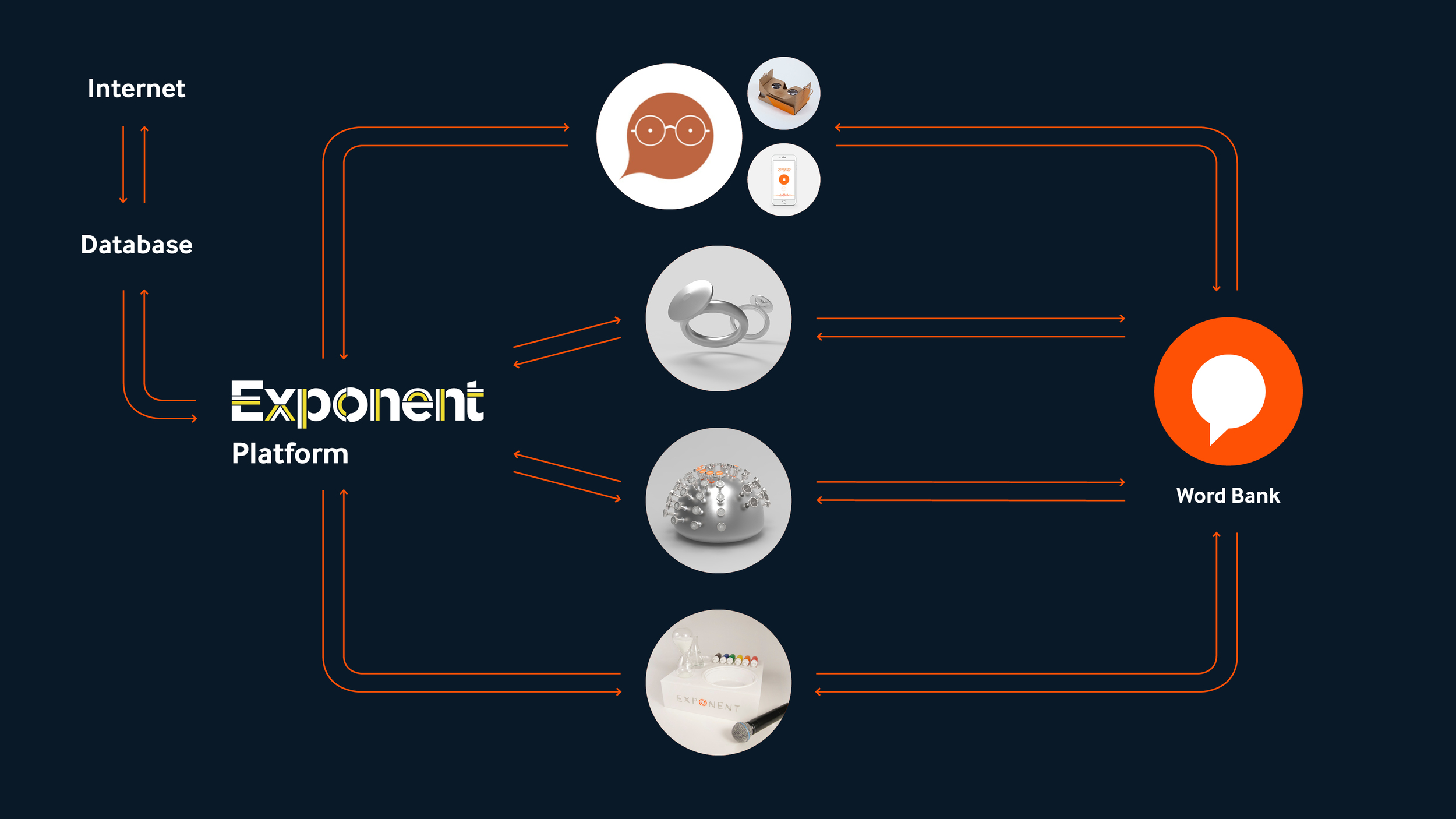EXPONENT: Amplifying the Female Voices in Tech Discourse
Design strategist and storyteller Roya Ramezani did not feel gender issues in the tech industry before she started working in Silicon Valley—where she found herself in a male-dominated environment in which women were not communicating their ideas. In contrast to the statistics, she joined a diverse team. After a month, however, she discovered something that changed everything: Even when they were equal number as men in the room, women weren’t contributing to the discussions equally. They were being quiet, and she thought of them as “not being present in the meeting room.” Roya’s thesis, entitled Exponent: Amplifying the Female Voices in Tech Discourse, attempts to address these issues using product design, service design design, and platform design.
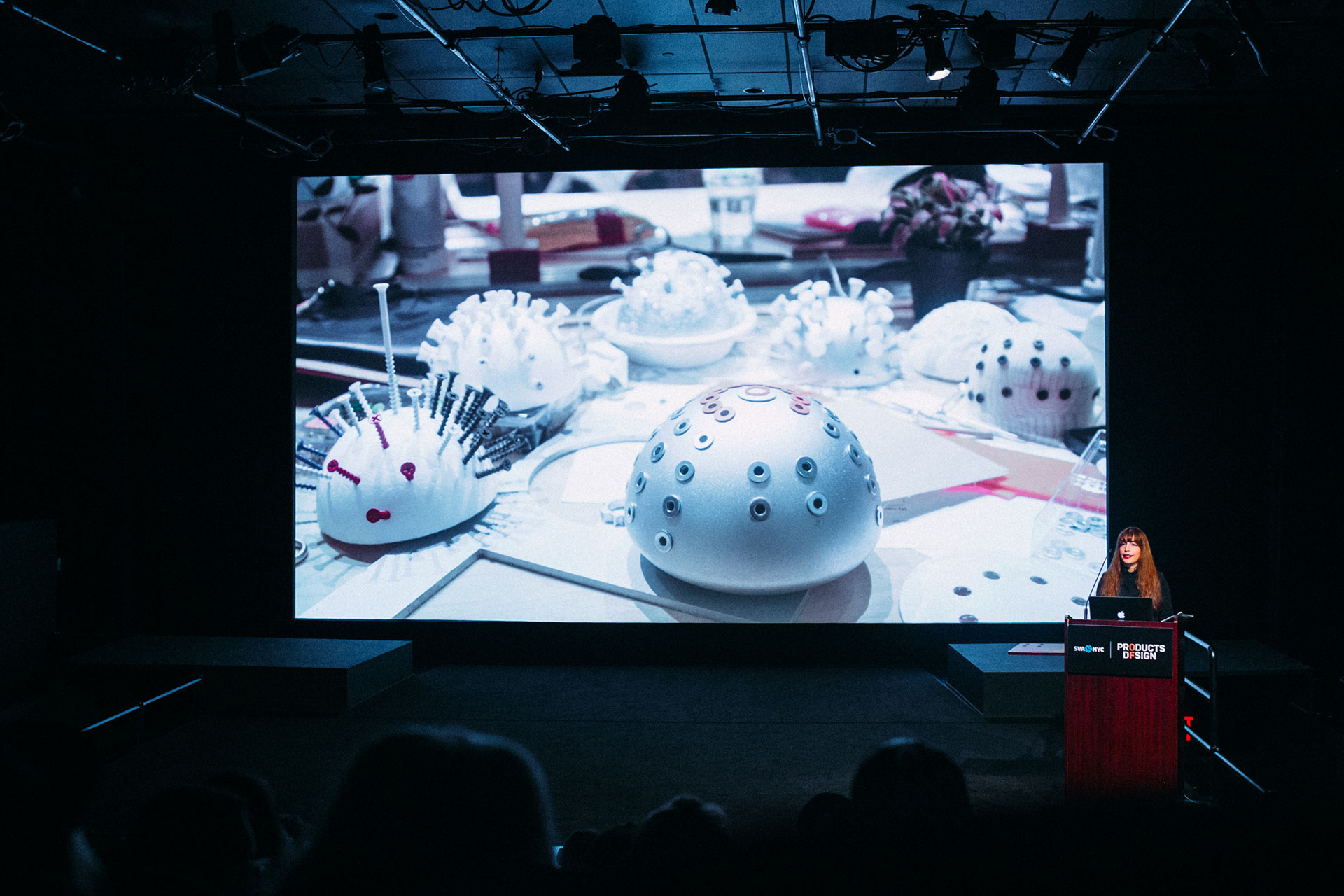
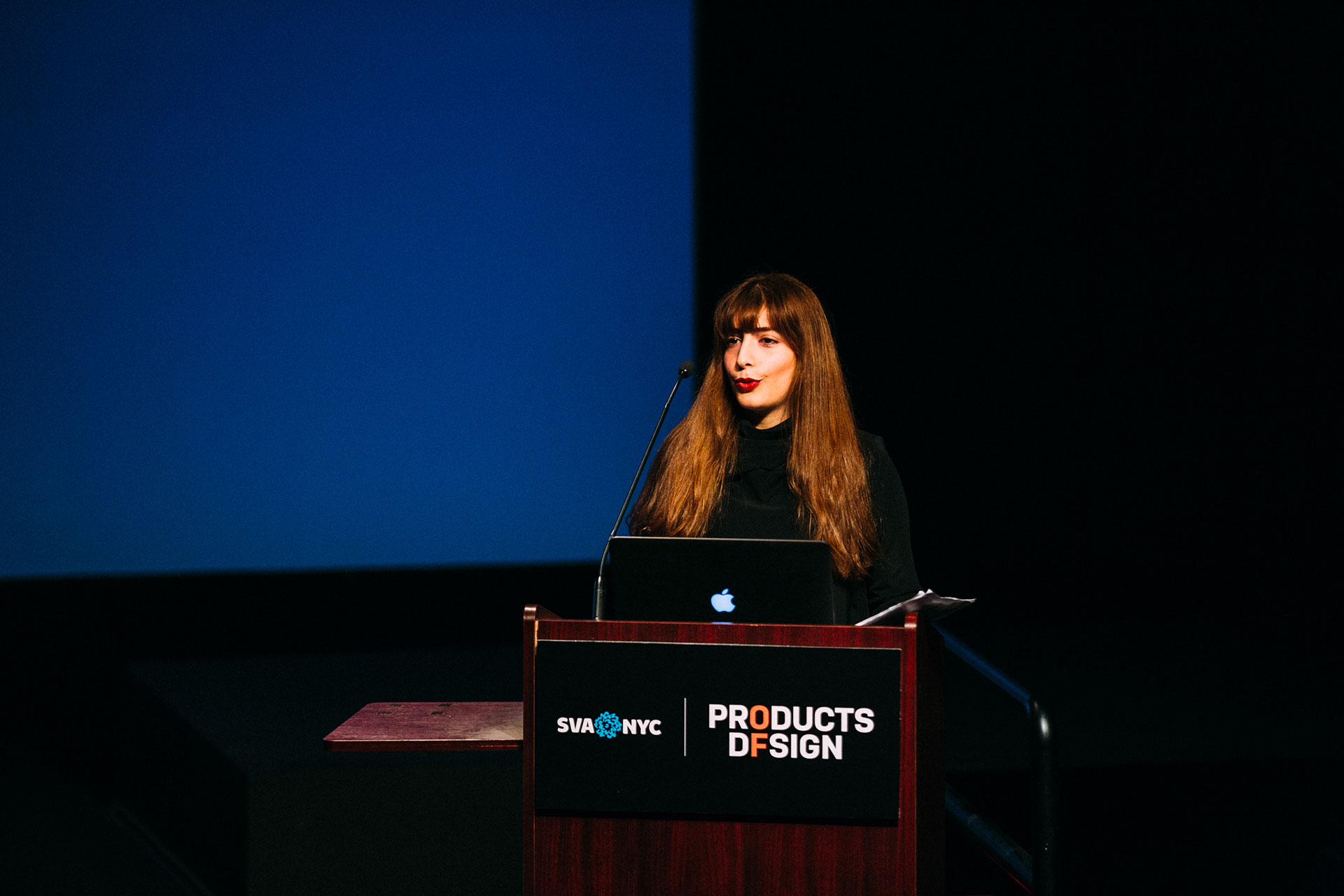
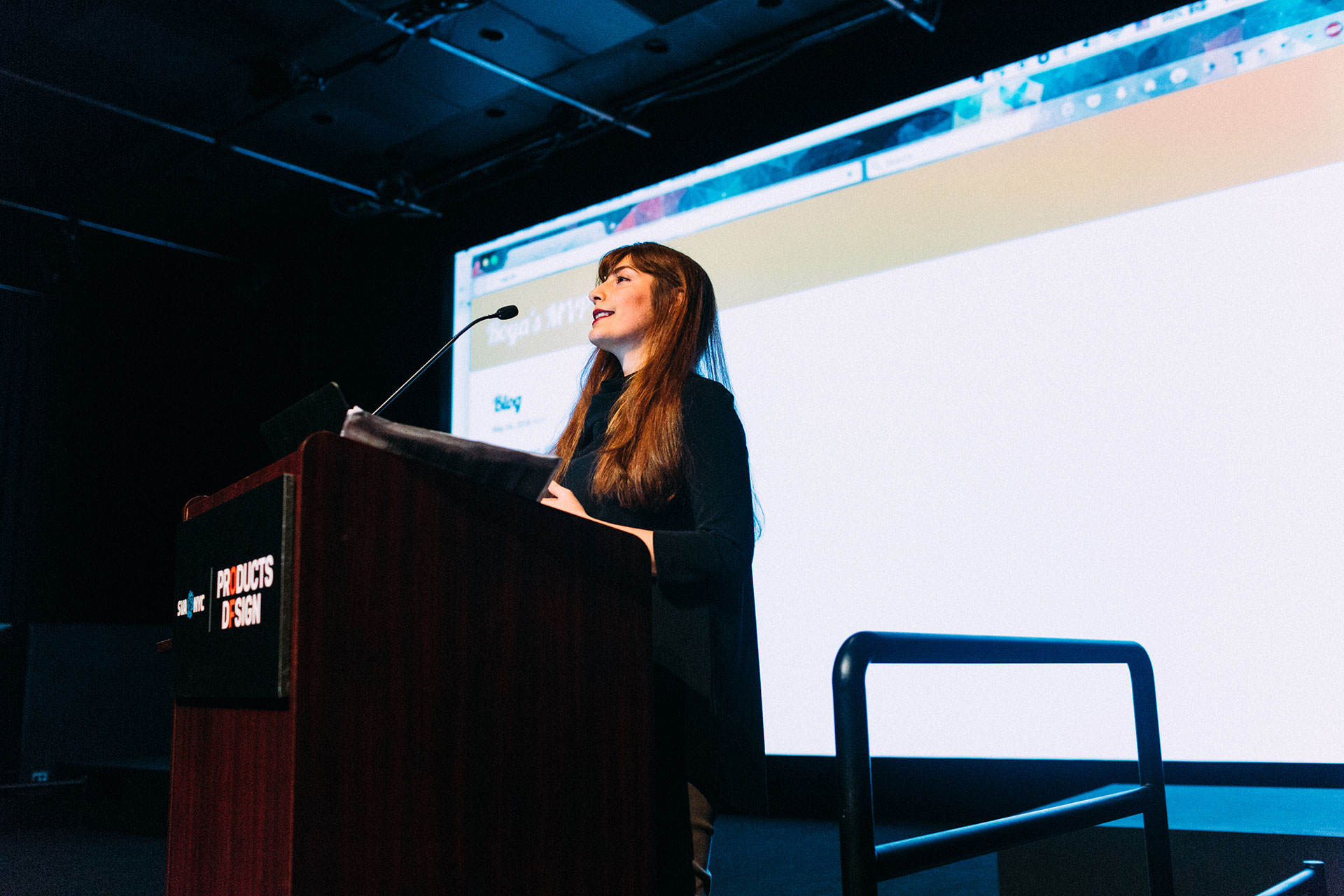
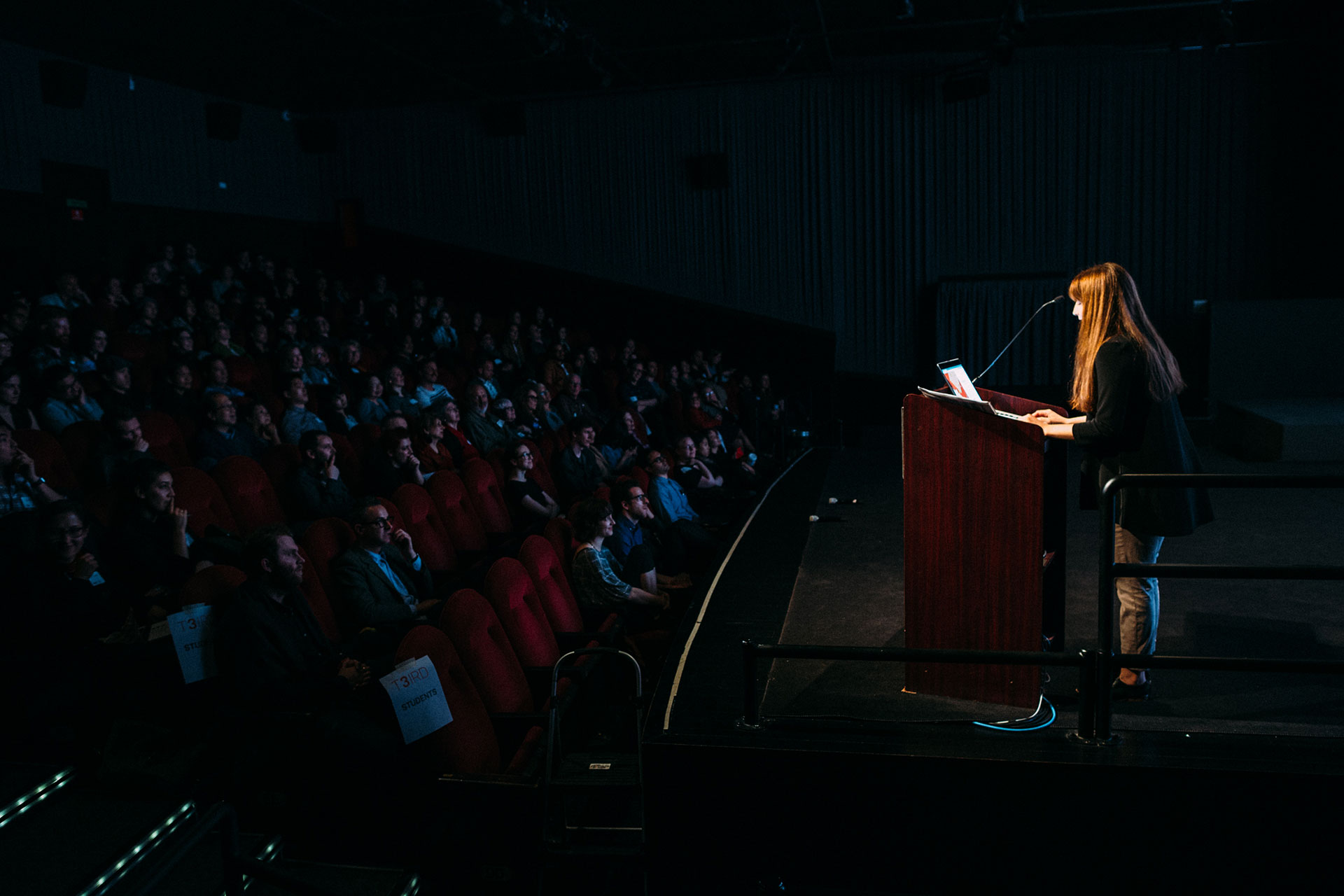
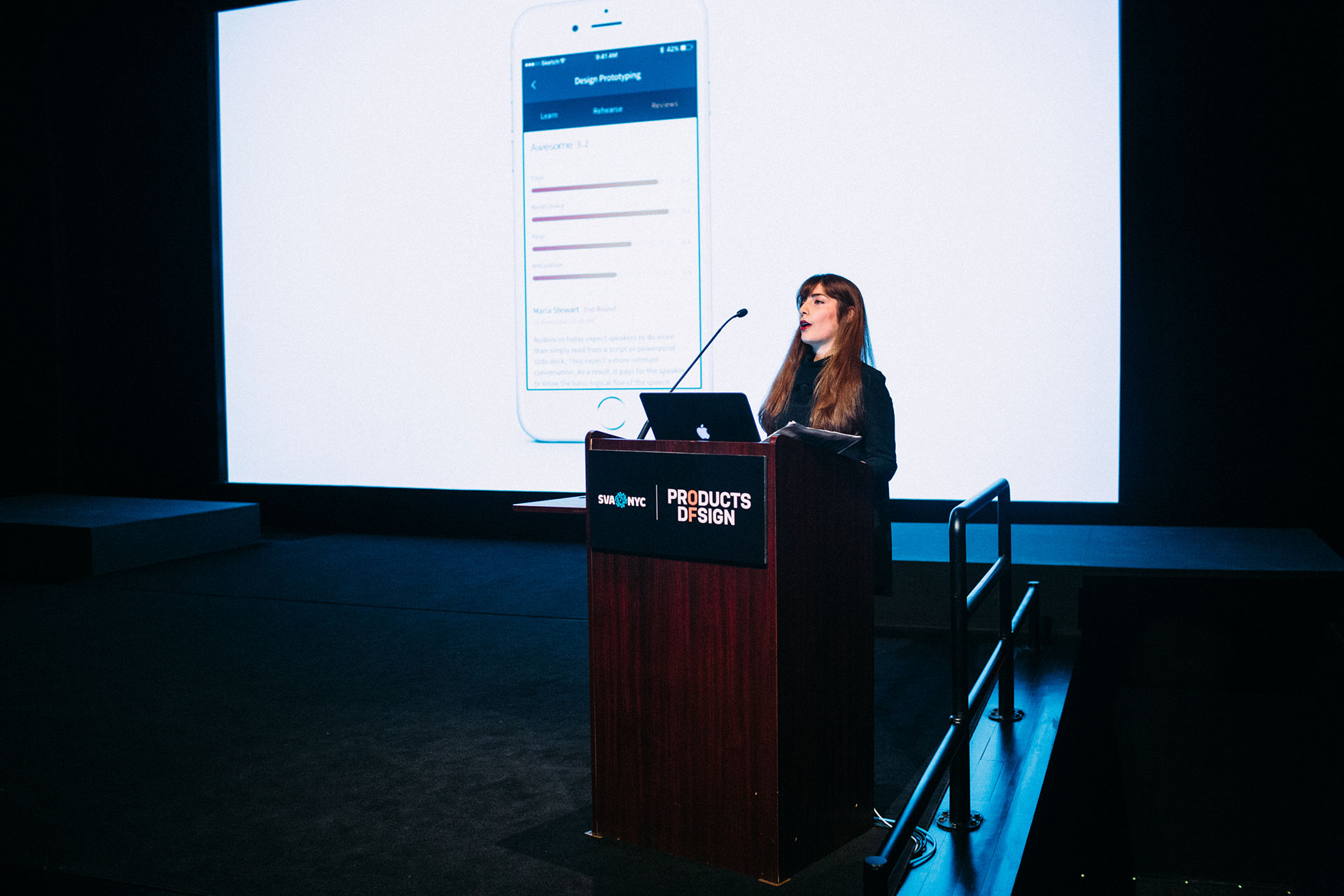
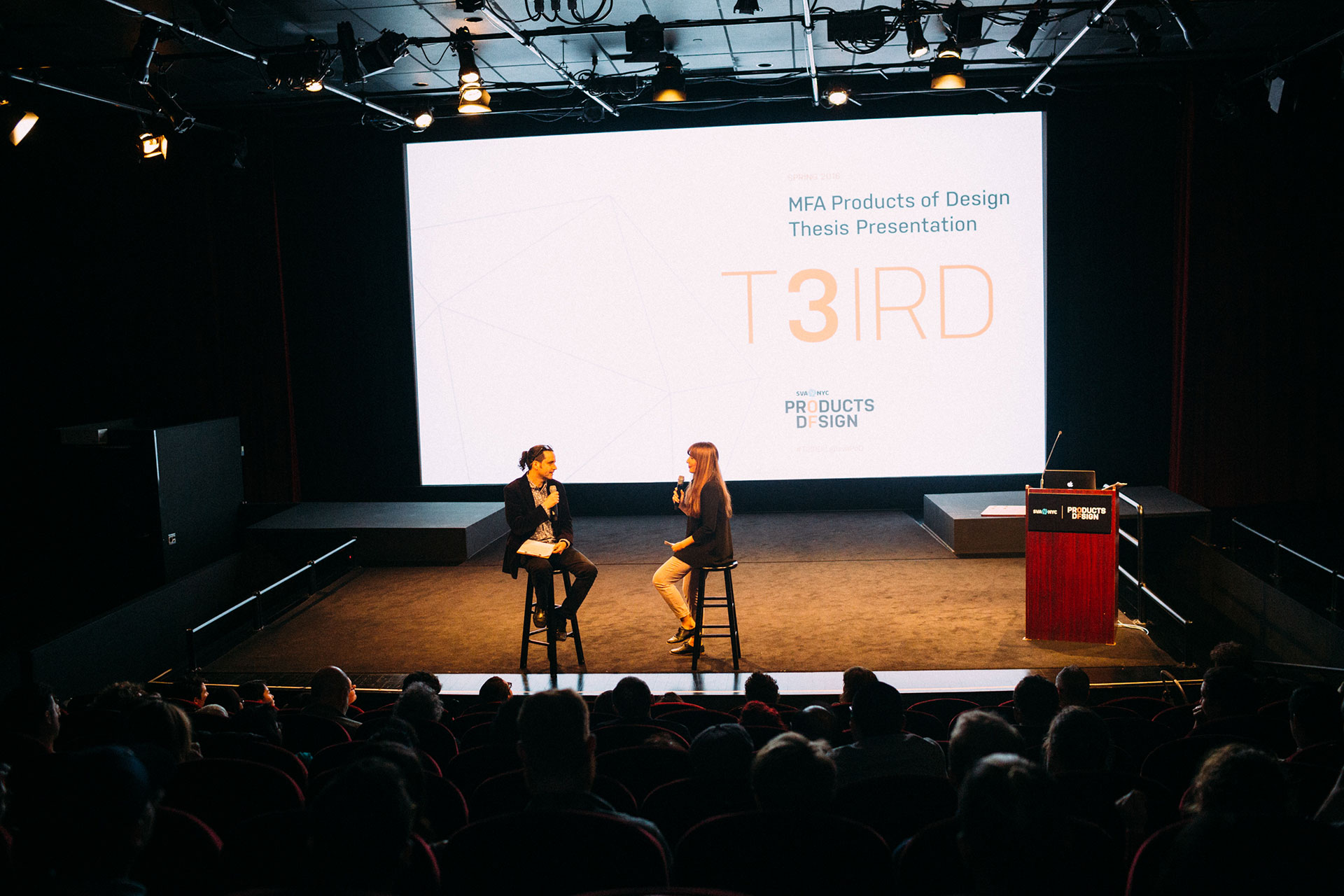
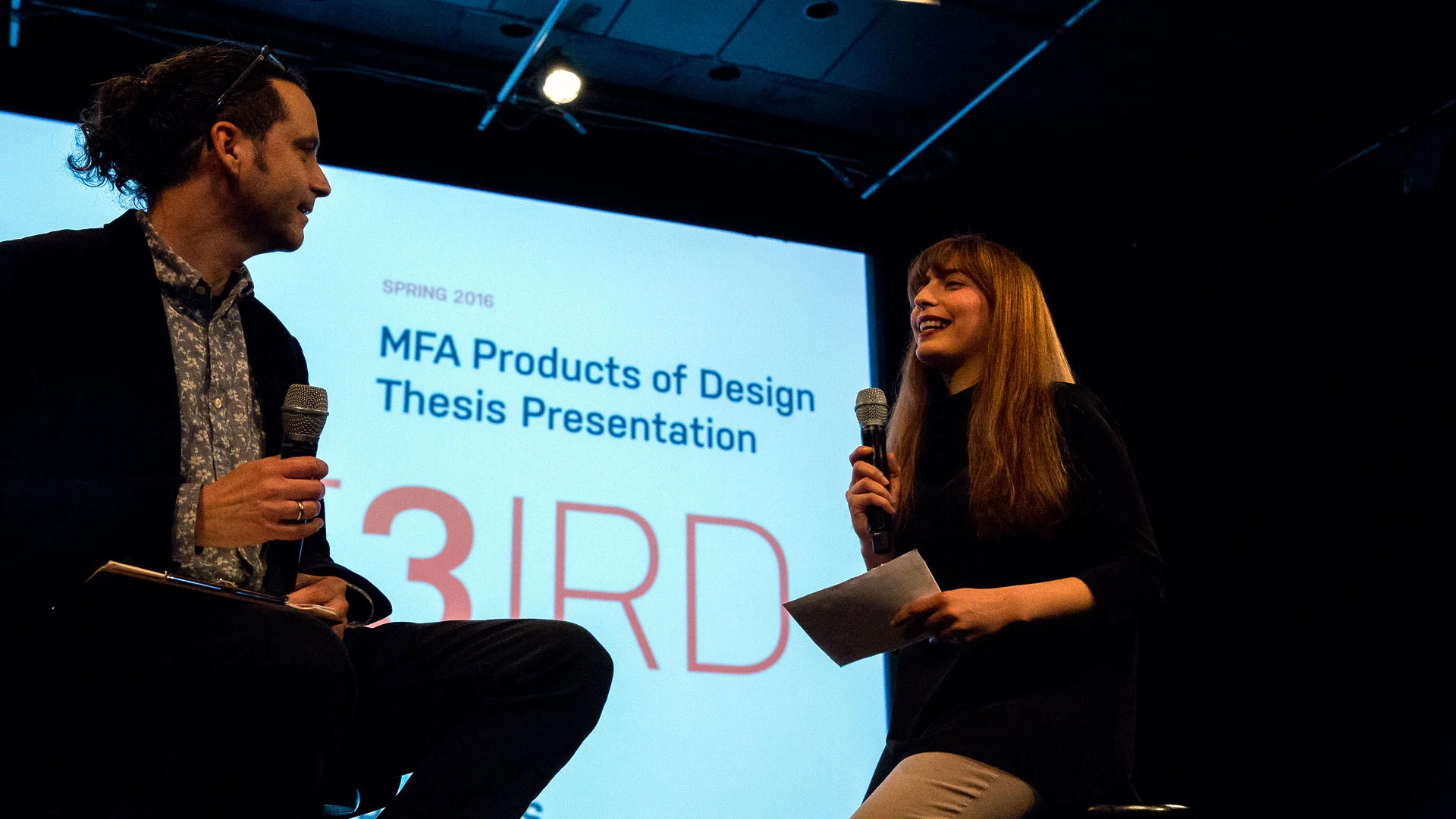
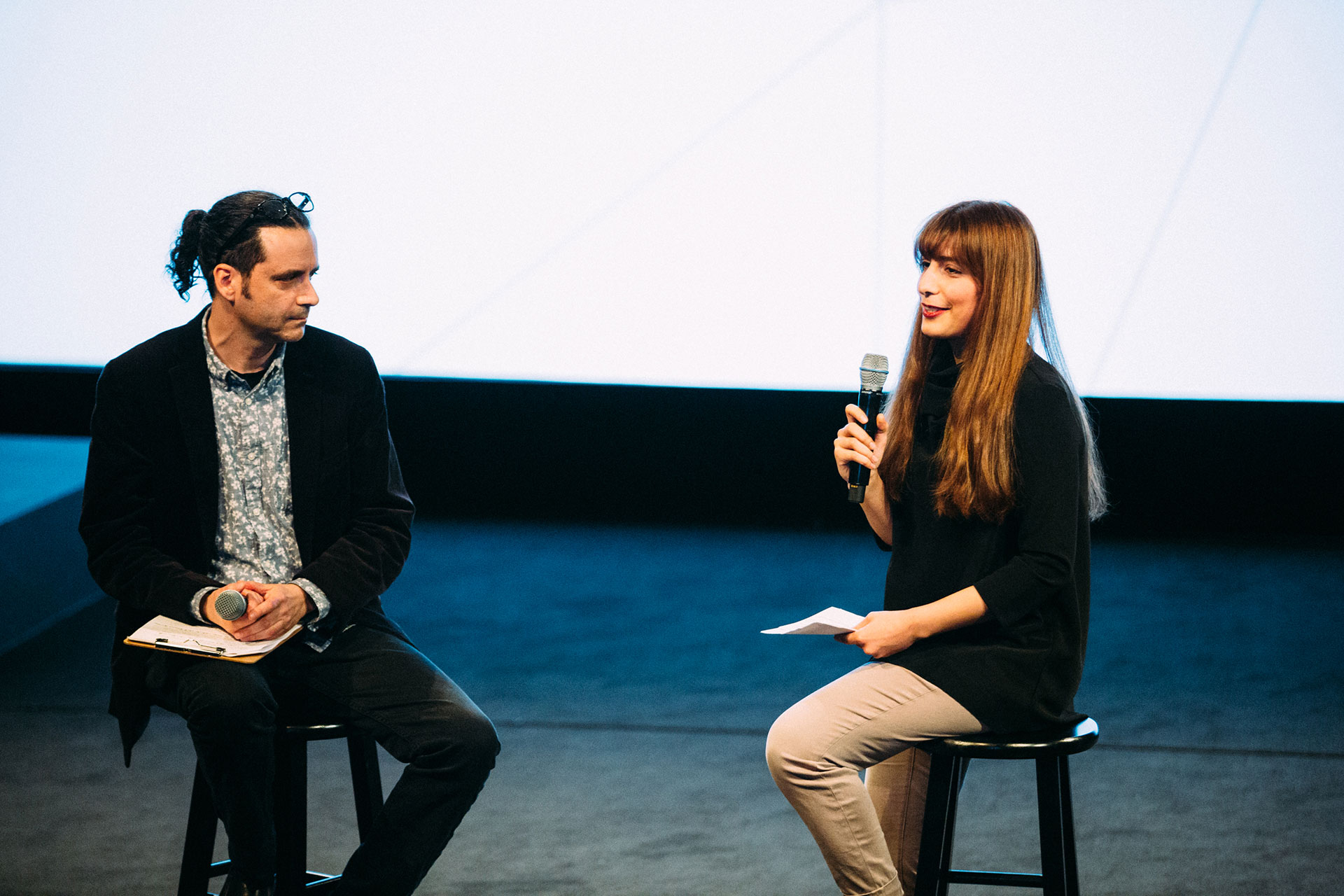
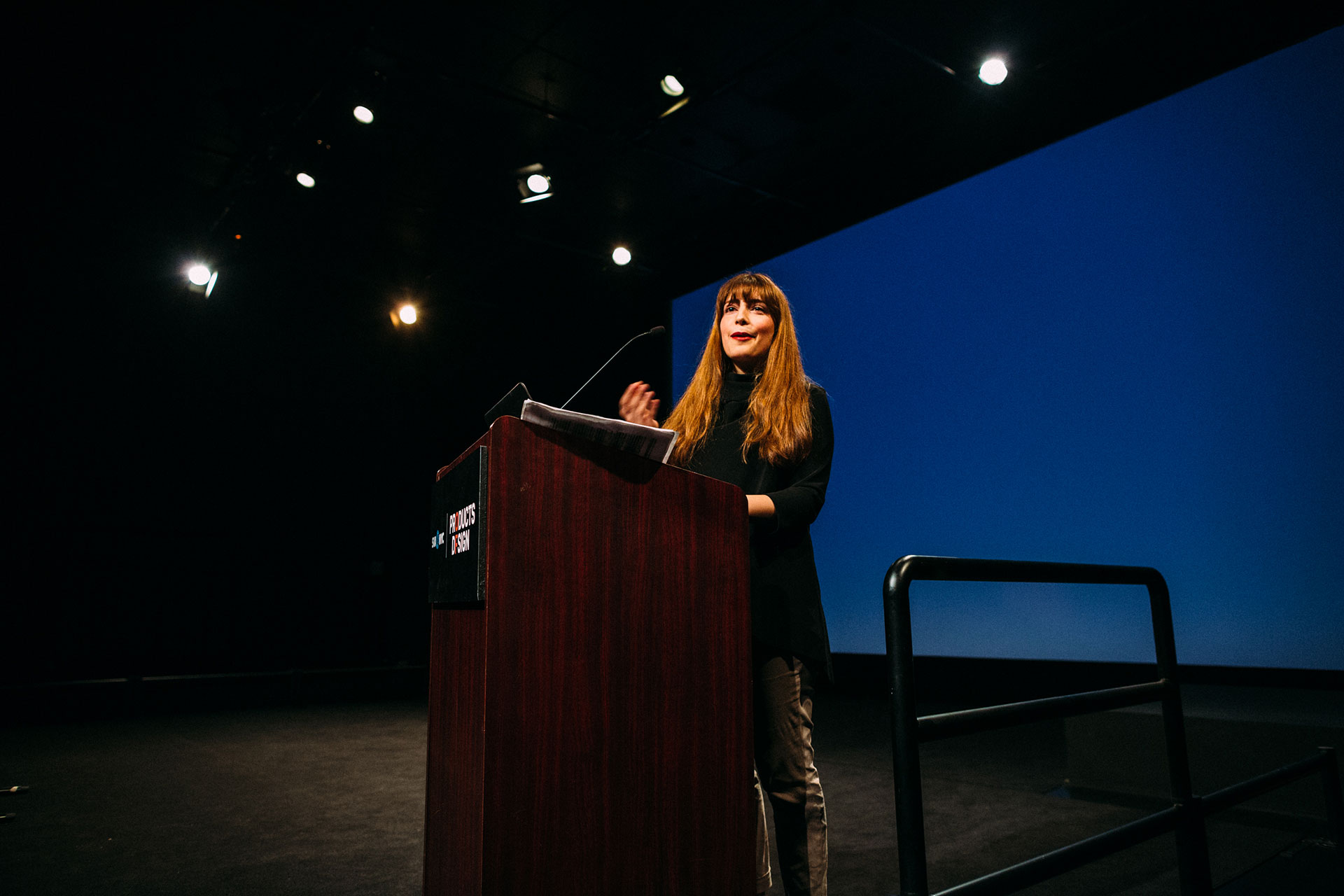
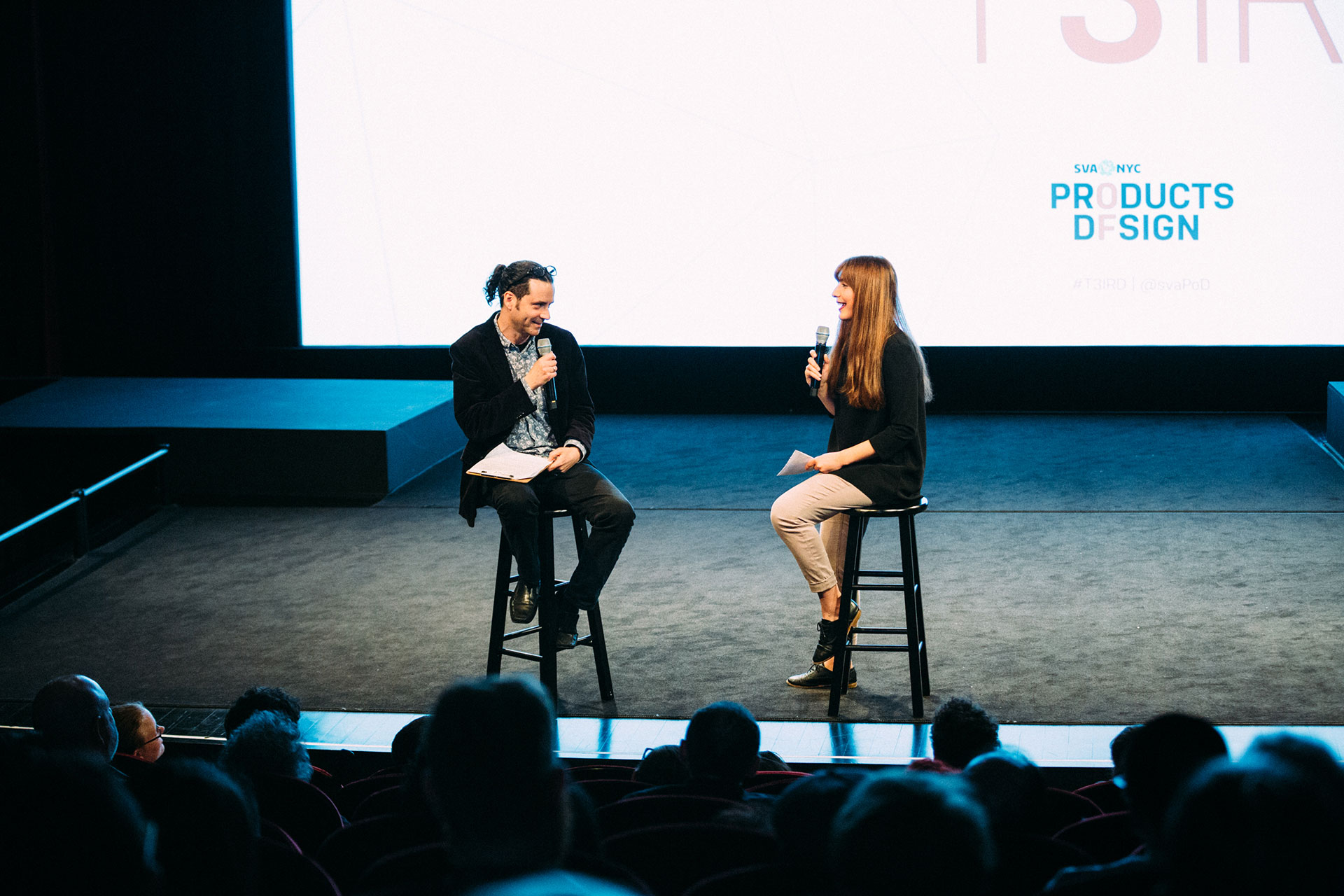
After a month, however, she discovered something that changed everything: Even when they were equal number as men in the room, women weren’t contributing to the discussions equally.
She argues that the online comment platforms are facing the same issue: lack of female voices. According to the OpEd Project—an organization based in New York that monitors the gender breakdown of contributors to “public thought-leadership forums”—a participation rate of roughly 85% men / 15% women is common.
Roya mapped out the landscape of the many reasons behind women’s silence—a complex ecosystem without simple solutions for wicked problems such as equality or diversity. Her work is an attempt to put a dent in the issue by focusing on the lack of female agency. Lack of agency is identified by two scholars from Princeton University as one of the main reason behind women’s silence. In their book, The Silent Sex: Gender, Deliberation, and Institutions, Christopher Karpowitz and Tali Mendelberg find evidence of a significant difference in contributions, and show how gender composition and rules dramatically affect what a group ultimately decides.
The word agency refers to the refers to the thoughts and actions taken by people that express their individual power. Women’s sense of agency and confidence is negatively influenced by being a minority voice. It affects women’s language and the way that they communicate their ideas and thoughts to men, where women usually tend to weaken their authority by using undermining language such as “I’m no expert, but…”
As Roya was excited to discover, journalists and psychologists were realizing the the impact of this self-sabotaging behavior on women’s overall success. Alexandra Petri, opinion writer for the Washington Post used humor to point a finger to this issue in her piece, Famous quotes, the way a woman would have to say them during a meeting.
For example, she rewrites the famous admonition “Mr. Gorbachev, tear down this wall!” into the following:
Woman in a Meeting: “I’m sorry, Mikhail, if I could? Didn’t mean to cut you off there. Can we agree that this wall maybe isn’t quite doing what it should be doing? Just looking at everything everyone’s been saying, it seems like we could consider removing it. Possibly. I don’t know, what does the room feel?”
This self-sabotaging behavior is not innate; it’s an acquired habit—a behavior that is unconscious and is imprinted in our neural pathways through repetition. Roya’s goal then became how to help women become conscious of their word bank. “I defined a word bank as the vocabulary that one uses, rather than the vocabulary that one knows,” says Roya.
Roya’s thesis products focus on enriching a woman’s word bank—making them conscious of their undermining habits and replacing their “mini apologies” with assertive language...through repetition.
Exponent Keyboard
Keyboards—either physical or screen-based—are the primary tools we use to convert our thoughts to words online. Roya wanted to use them as a starting point for her interventions, and speculated around how women might benefit from a product line that leveraged women’s cognitive advantages. She imagined a utopian future where all tech companies have implemented the new keyboard—quickly becoming "a woman’s new weapon."
Research around gender cognitive and physical differences reveals that women have superior fine motor skills. The Exponent Keyboard has keys that are intentionally smaller than those of a standard keyboard, liberating extra space for adding more keys. Roya designed these new keys to trigger some of the assertive action verbs missing from many women’s word banks—such as “Claim” or “Disagree” or “Insist”. The keyboard’s software tracks every keystroke, adding every word to its database. The exponent server then analyzes the words, and based on individual input, generates missing “power verbs.” These words are repeated over and over—until they become part of the user's modified word bank.
The form of the keyboard is inspired by Thomas Hansen’s writing ball—the first commercially available typewriter—built in 1870.
Roya designed these new keyboard keys to trigger some of the assertive action verbs missing from many women’s word banks—such as “Claim” or “Disagree” or “Insist”.
Exponent Ring
“When we talk about unconscious behaviors,” Roya argues, “we should consider reminders as well.” Here she envisioned an Exponent wearable device as a simple ring. It’s a discrete product and is paired with the user’s phone app. Once the app is activated through touching the ring, it starts to record and add each spoken word to user’s word bank.
In order to make people conscious of their destructive habits, the ring will vibrate when the app hears trigger words such as “just”, “sorry”, “basically”, “like”, and so on.
“Even though these functions could be achieved with the current wearable technology devices such an Apple watch app, the anticipated low price point makes it more accessible to a broader audience, and the single functionality makes it more effective,” adds Roya. “We become more empowered, feel more able to express ourselves, and most importantly, have more confidence when we have practiced and gotten approval from people we trust.”
Roya was able to create a prototype with the help of a machine learning PhD candidate at Carnegie Mellon University
Presentation Buddy
When It comes to sharing ideas and communication skills, one of the most important vehicles is public presentation. “It’s important to share your thoughts and ideas with others, but to do it well requires practice and confidence,” says Roya. “Despite very often being more qualified than their male counterparts—holding more professional degrees and holding equal positions in the workplace—women are less likely to volunteer for public speaking opportunities.” She believes that one reason is that men are a lot more confident and self-assured. As a result, men's voices still dominate in areas that matter and in online platforms. Women are underrepresented in the media, in the boardroom, and in online commentary platforms. And when it comes to entrepreneurship and starting a business, women are less confident about pitching to prospective funders and clients.
The Presentation Buddy app is designed to address and improve this imbalance through a personal coaching service. Buddy is a personal speech coach that helps users build confidence for public speech through constructive rehearsal. The app leverages a Conversational UI to build a relationship between the user and the built-in bot named Buddy. Buddy asks for the presentation topic, scans commentary forums, and grabs the most relevant, widely-referenced words used by professionals in that field.
Afterwards, people record their rehearsal, and Buddy gives them an overview of how they did, “providing suggestions on how to sound more like they know the language of their field."
Roya was able to create a prototype with the help of a machine learning PhD candidate at Carnegie Mellon University, and when they tested the prototype, an insight from a particular user lead to the next feature. She commented, “It’s not the same experience when you’re up there with all those eyes staring at you. People make all the difference.”
In order to make the rehearsal closer to the actual experience, Roya envisioned a VR space so that users could rehearse in a venue packed with an audience. In this instantiation, Buddy would be augmented in the audience, giving immediate constructive feedback and reminding speakers of destructive habits.
“One of the best practices for adapting a powerful language is to observe and mimic people who are successfully doing it.”
Exponent voices
“One of the best practices for adapting a powerful language is to observe and mimic people who are successfully doing it,” Roya argues. She created Exponent Voices with two goals in mind. The first was to create a platform for women developing their voice by learning and getting inspired by powerful female voices in their industries. It’s a series of interviews where women thought leaders in tech and science share stories about their challenges, their proud moments, and tips of wisdom based on their experience.
Roya used the typology of a "science lab" to create a visualization of their voice so that participants could see the power of their language.
Here, she created a device that connects to a microphone and transfers the sound vibration of the speaker to water so that the waveforms can be visualized.
The human voice is composed of a multitude of different components—making each voice different—such as pitch, tone, and rate. Pitch is critical. Roya paired the visible spectrum frequency with voice pitch frequency, and created 6 segments. Each segment represents one color from the spectrum. During the interviews, colors were added to the water based on the pitch of the participants voice. At the end of the session, participants received a sample of the water—“symbolically carrying away their voice energy.”
These interviews—along with their sound visualizations—are posted on the online platform for women technologists and scientists—to visit, listen to, and further develop their own strong language.
Her second goal was to bring together a community of role-models for women in tech and science. “Role-models are important in cultivating women’s interest and success in STEM fields,” Roya argues. “Young female students are more likely to choose to pursue a STEM career or education if they have a role model in mind.” There is research on the gap between men and women in STEM fields that reveals the scarcity of readily available role models for women as they consider careers in tech. “Role-models can be thought of as lighthouses: they offer a steady point of reference as we travel through complicated waters.” says Dr.Larry Goodman.
Roya concludes with a thought: “Words are like weapons. They’re vey powerful. Change the story you tell yourself about yourself and it will change who you become.”
Learn more about Roya Ramezani’s work a contact her at roya.ramezani[at]gmail[dot]com.


